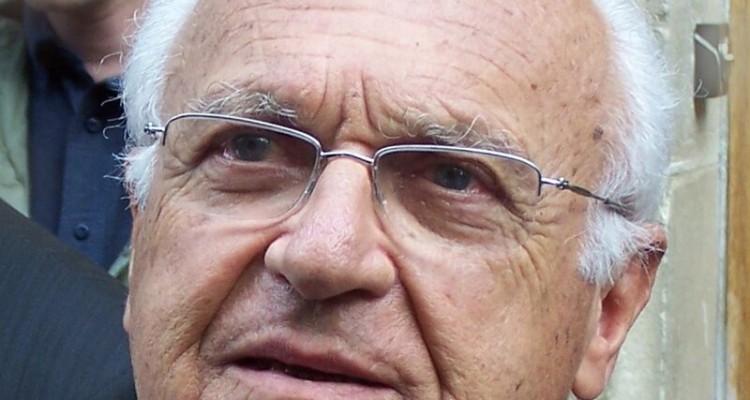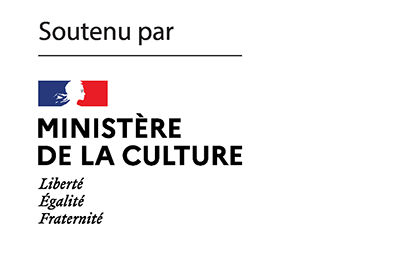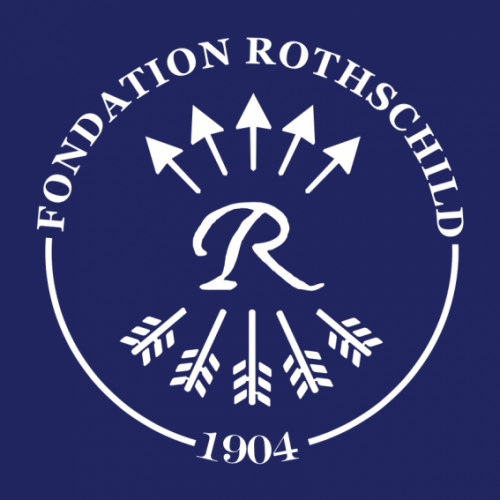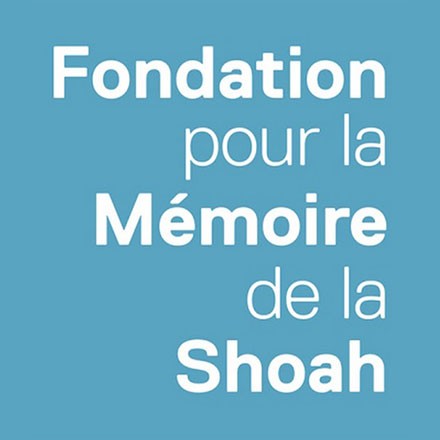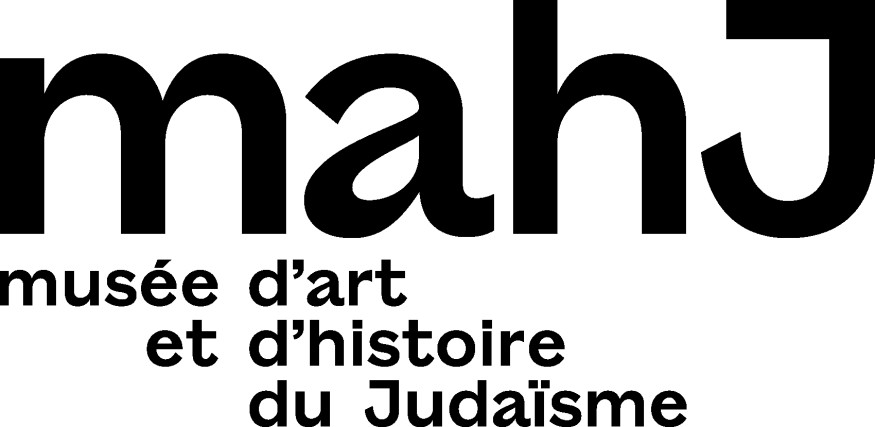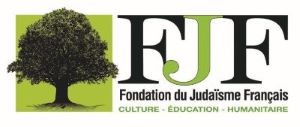On the report of the Historical Commission for the History of the Medical Faculty of the Reichuniversität Straßburg.
Created in 1941, following the annexation of Alsace-Moselle to the Reich, the Reichsuniversität Straßburg was part of the Nazis’ plan to Germanise its annexed territories. What exactly happened within the walls of the University when it was in Nazi hands? We know, for example, that the director of its anatomy institute built up a collection of skeletons of murdered Jews… In 2016, an international and independent Historical Commission was set up, whose mission was to shed light on the history of the Reichsuniversität between 1941 and 1944. The Commission’s aim was to evaluate the University’s medical collections to ensure that no human remains from victims of Nazism were still in the collections, and to provide recommendations for the ethical training of current and future medical staff. Review of the Commission’s final report..

It was in the studious calm of the amphitheatre of the Institute of Anatomy of the Faculty of Medicine in Strasbourg that the final report of the Historical Commission for the History of the Faculty of Medicine of the Reichuniversität Straßburg (RUS) was presented to the press on the 3rd of May. The members of the publication board are ready to speak[1]. Stacks of boxes containing the famous report can be seen. On its cover is a photograph of the inaugural speech of the RUS medical faculty by its dean Johanne Stein in the amphitheatre of the Médicale II. Date: 24 April 1941. The print is heavy with the five hundred pages of research carried out by the fifteen or so experts from different disciplines who combed through the old collections of the medical faculty. But the researchers did not stop there. They followed up a whole series of leads in France, Germany and several other countries. Their aim? To shed light on the darkest period of the Strasbourg establishment. The creation of the Commission, in September 2016, follows the work of Raphaël Toledano, who revealed in his doctoral thesis in medicine[2] the criminal medical experiments carried out by Eugen Haagen at the Natzweiler-Struthof camp. He listed for the first time the names of the 189 Roma victims of the Nazi virologist. A few years later, Raphaël Toledano directed, alongside Emmanuel Heyd, Le nom des 86 – a film through which the French public discovered the abominable project of collecting “Jewish skeletons” by August Hirt, appointed director of the RUS anatomy institute in the summer of 1941.
And the university becomes German…
In order to better understand what was at stake in such a report, let us first return to the local historical context. At the end of August 1939, the medical faculty of the University of Strasbourg was evacuated and transferred to Clermont-Ferrand where the students could continue their theoretical training. The practical training, on the other hand, was carried out in Clairvive in the Dordogne. Meanwhile, in Strasbourg, one year after the de facto annexation, the Nazi regime inaugurated the third Reichuniversität in Germany (the other two were in Prague and Posen). The complete reopening of the Civil Hospital, now called the Bürgerspital, took some time and it was not until November 1941 that the Reichuniversität Straßburg was fully taken over by the German hierarchy. The latter intended to take advantage of its Alsatian position, at the gateway to Western Europe, to make it one of the showcases of National Socialist “genius”.
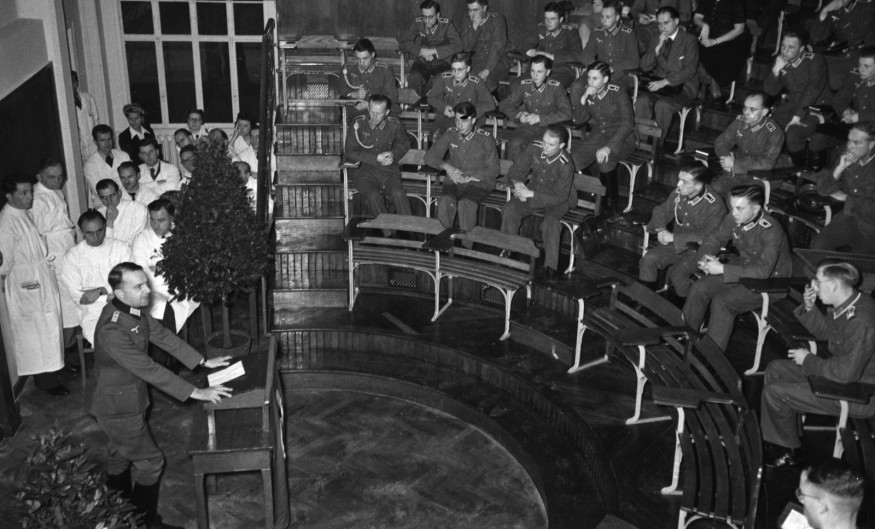
Until the spring of 1943, the enterprise sparked euphoria among a large number of Germans and Germanophile Alsatians. For most of them, cooperation with the German authorities meant first of all dealing with a new hierarchy. However, the carefree period was short-lived. In 1943, the entry of the United States into the war, the defeats on the Russian front and the bombing of Strasbourg in November tarnished the picture and were accompanied by massive political repression. Christian Bonah writes: “If in 1941, participation in National Socialist actions was a driving force for career advancement, from 1943 onwards, non-participation was increasingly interpreted as distancing or refusal.”[3]
It was during this same period that medical research practices became more radical and August Hirt, Eugen Haagen and Otto Bickenbach carried out most of their criminal human experimentation projects, which lasted until November 1944. When Strasbourg was liberated, the French university returned to its premises in time for the next academic year in September 1945. Things returned to normal – or almost normal…
The return of a hidden history
Before the press release of the final report of the Historical Commission for the History of the Medical Faculty of the Reichuniversität Straßburg (RUS) on 3 May 2022, the present-day Strasbourg student had never had the opportunity to reflect on the dark years of his university; and this despite the official statements of the University of Strasbourg[4] at the time of the scandal provoked by passages in Michel Cymès’s book, Hippocrate aux enfers [Hippocrates in Hell][5]. Hidden from view, they sometimes reappeared, without warning, at the bend of borrowing an old book: a stamp then testifying to the Nazi past of the institution’s walls.
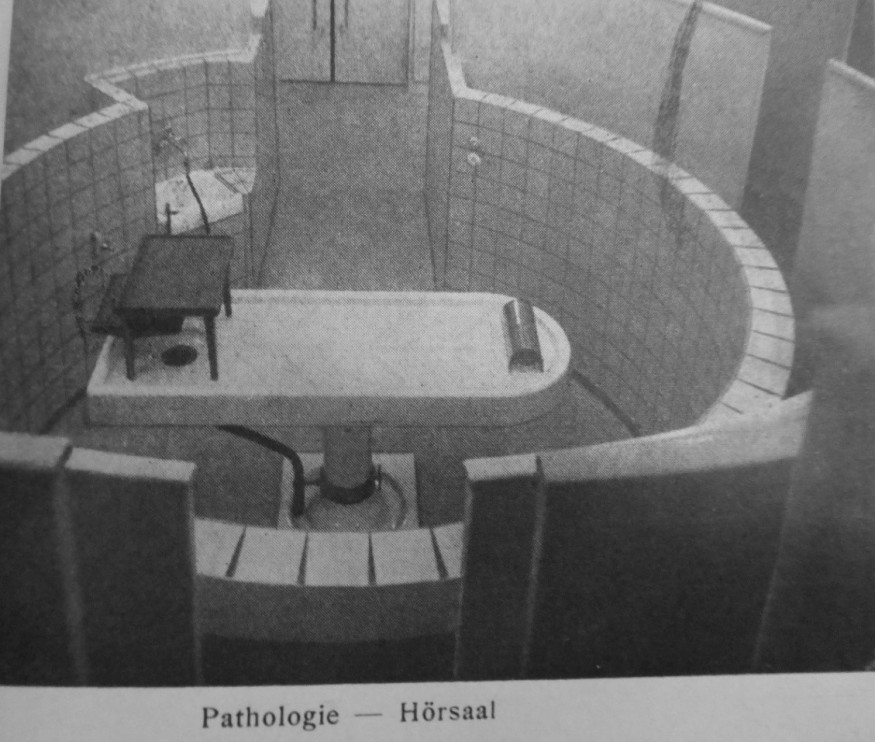
Frédérique Neau-Dufour, director of the European Centre of Deported Resistance Members and a member of the Commission, points out that the historical clarification first came from Germany, thanks to the first long investigation by the journalist Hans-Joachim Lang[6], who managed to name the 86 victims of August Hirt. But, as the historian reminds us in the report, it would nevertheless take nearly 70 years for “the memorial dimension of the main Natzweiler-Struthof camp to roughly coincide with its historical dimension.”[7] Today, the same question comes up again: why did they wait so long?
After the official press conference, during the public presentation of the report in the unavoidable “white room” of the Kléber bookshop, the second event of this day of 3 May 2022, the members of the Commission do not wait for the question to be put to them before answering it. The speakers began by insisting on the complexity and singularity of the Alsatian case, a de facto annexed territory, in the context of the end of the war, but they did not limit themselves to the consensual discourse which, after having lulled generations of students for a long time, had ended up stifling any hope that light would be shed on it one day. Christian Bonah acknowledges this: “We cannot say that we did not know. And more generally, it is difficult not to acknowledge the fact that the University of Strasbourg denied, for years, the presence in its collections of human remains linked to Nazi criminal research. And once this fact was established, he recalled that the mission endorsed by the Commission was not to judge the attitude of the French institution over the last few decades but to carry out a thorough and interdisciplinary investigation to find out what had really happened in the “village” of the Bürgerspital.
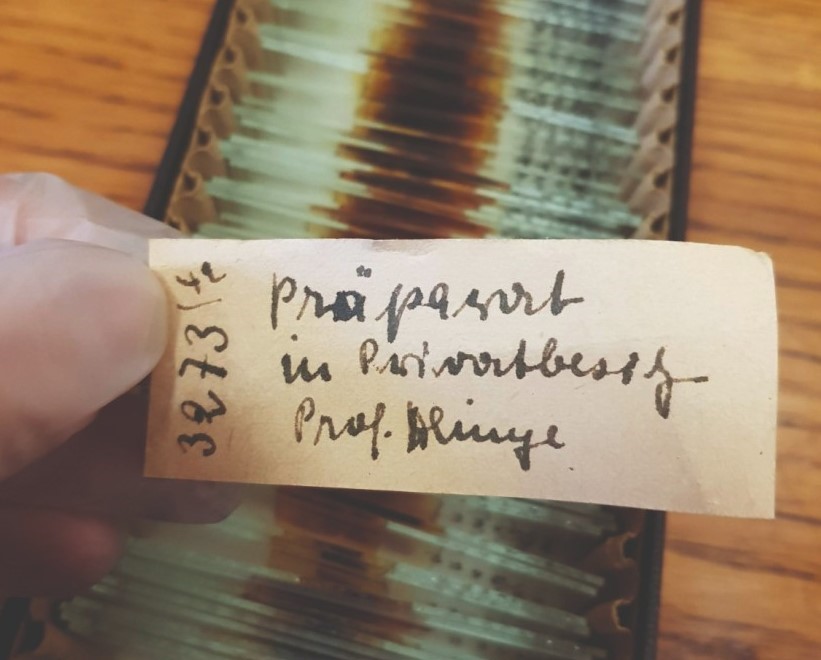
When historians take up the work of memory
In the preface to the report, Jean Sibilia, Dean of the Faculty of Medicine, quotes Simone Veil and reminds us that the only duty is to teach and transmit what history teaches us. The duty to remember cannot be said but must be done. This is what the Commission shows us. And when we read the report’s investigation protocol, we have a better grasp of the scope of the task accomplished: it is a true reconstruction of the functioning of the Reichuniversität Straßburg coupled with detailed individual biographical research on both the medical staff and the victims. The report is extremely detailed on the scientific practices undertaken – with a precise reconstruction of the research conducted – on the medical experiments carried out, as well as on the organisation of the university, the functioning of its administration and its links with the Natzweiler-Struthof camp. It is a multi-layered work that allows us to better grasp the paradoxes and nuances of a field of tensions, too often sketched in broad strokes, caricaturally opposing resistance and collaboration. Every Alsatian knows that family silences are as heavy as the ambivalence of attitudes during the war. For example, the return of many Alsatians encouraged by the National Socialist authorities after the evacuation in 1939. Almost 40% of the Alsatian population worked for the Third Reich during the war. This is a fact that few works have dealt with until now. The authors of the report have done otherwise: by embodying this question in the biographies of RUS personnel, they have managed to typologise five motives-attitudes-types forming a continuum between “two attitudes, theoretically antagonistic [Resistance/Collaboration], (but) often more complex, more nuanced (which) evolve over time, transform and turn around. “[8]
The third part of the report, entitled “Clinics in everyday life. Disciplines, personnel, teaching and care’ allows the reader to picture with disarming accuracy the functioning of each of the RUS departments. The systematic cataloguing of the psychiatric clinic’s holdings was based on a comprehensive examination and study of the medical files. The first task was to determine the involvement of the RUS and the asylums of Hoerdt and Stefansfeld[9] in national-socialist ‘euthanasia’. Although Alsatian institutions were not the setting, “the clinic nevertheless fulfilled an important function in the dialectic of ‘healing and elimination’ as well as a not inconsiderable function of selection and distribution”<footnote>Léa Münch, “La clinique psychiatrique et ses patients”, Op. Cit., 72.</footnote> of patients to establishments where a precipitous death was certain.
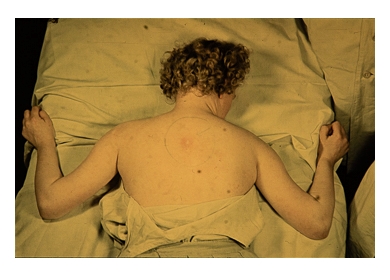
On the paediatric side, the analysis of the archives of the children’s clinic directed by Professor Kurt Kofmeier enabled the Commission to rule out the hypothesis of criminal research or treatment. On the other hand, it is undeniable that, while providing “ordinary health” care, the Strasbourg children’s clinic played a key role in the implementation of the “racial purity” of a population that was precious to the staff involved in the organisation of the Lebensborn[11]
Other departments of the hospital are reviewed, to the point of plunging the reader into a real historical immersion. However, the authors only set the scene for the core of their investigation: the commission of medical crimes and the existence of collections of human remains in the medical faculty of Strasbourg.
Scientific and criminal activities
The aim is clear: to unravel, after the horror of the revelations of the “collection of 86”, what was done at the Reichuniversität Straßburg and to carry out a detailed survey of the traces left by these scientific and criminal activities. It is the consideration of both terms that makes the work so valuable. Indeed, the authors note, with a disturbing neutrality for the reader who is not used to it, that most of the National Socialist research themes were not obsolete or aberrant for the time. What characterises them, however, is their profoundly racist political, demographic and sanitary aims in addition to an extremely brutal research practice that completely obscures the humanity of the subjects. The authors are unequivocal: the human experiments with mustard gas by Auguste Hirt and Karl Wimmer in the Natzweiler concentration camp were indeed scientific and criminal. Otto Bickenbach’s phosgene experiments were scientific and criminal. Eugen Haagen’s yellow fever vaccine tests on live prisoners in the Schirmeck security camp and his typhus experiments on hundreds of prisoners in Natzweiler were also scientific and criminal.

If further arguments were needed, Florian Schmaltz admitted during the public presentation that occupational medicine continued for decades after the end of the war to use some of the data produced by Otto Bickenbach on the toxicity of mustard gas, not least because it is a substance found in certain types of plastics (right?) and the tests cannot be reproduced on animals. The statement is chilling. This scandal only broke in 1988, when the general public became aware that an American environmental agency had used the same data. The authors of the report do not pretend to be optimistic and warn that nothing will prevent the ethical limits from being transgressed again in a similar, different or new way. Need we remind you that, even then, elaborate ethical regulations were supposed to provide a framework for practices?
Lessons to be learned
This is the second step in historical enquiry as a practice of the duty to remember. After naming the victims and reconstructing their biographies whenever sources allowed, the Commission confronts the scientific community with a crucial collective responsibility: ethics. The authors warn that the experimental protocols that caused these deaths were not the product of the imagination of “mad scientists” but were established with the rigour of eminent academics. In tackling the duty to remember, the members of the Commission intend to go beyond the moral dimension and draw practical lessons from the historical events studied. The authors insist that the epistemic risks of transgressing ethical norms in biomedical research have not disappeared. On the contrary, they exist with increasing acuity as medical and pharmaceutical studies become more international in regions marked by socio-economic inequalities. Restrictive standards and legal provisions are not enough to prevent the worst transgressions. To avoid them, each medical and scientific professional must critically and spontaneously examine his or her own actions. For this reason, the publication of the report also marks the creation of new training courses for medical students and the launch of a participatory online database compiling the biographical data of all those involved at the Reichuniversität Straßburg.
On the homepage of the website[12] is the inscription of the memorial for Walter Benjamin: ‘It is more difficult to honour the memory of the anonymous than of the famous. The historical construction is dedicated to the memory of the anonymous.” The future will tell us whether the digital world will succeed in embodying the history of hundreds of patients and victims, but also of students, doctors and heads of clinics working between 1941 and 1945. A history that the Strasbourg university has chosen to assume, as difficult as it is to face, and which opens the way to other investigations as necessary as this one.
Maëlle Partouche
Maëlle Partouche is a doctoral student at the University of Strasbourg and at the École des Hautes Études en Sciences sociales. Her PhD thesis focuses on the relationship between Zionism and Jewishness in France and the United States.
Notes
| 1 | Christian Bonah, professor of history of life and health sciences at the University of Strasbourg, Florian Schmaltz, doctor of contemporary history and science at the Max Planck Institut für Wissenschaftsgeschichte in Berlin and Paul Weinling, professor of history of medicine at the University of Oxford Brooke, accompanied by Michel Deneken, president of the University of Strasbourg. |
| 2 | Raphaël Toledano (1980- ), “Les expériences médicales du professeur Eugen Haagen de la Reichsuniversität Straßburg : faits, contexte et procès d’un médecin national-socialiste” [“The medical experiments of Professor Eugen Haagen of the Reichsuniversität Straßburg: facts, background and trial of a National Socialist physician”] (Strasbourg, University of Strasbourg, 2010). |
| 3 | Christian Bonah, “Les Alsaciens à la Medizinische Fakultät de la Reichuniversität” In “La faculté de médecine de la Reichsuniversität Straßburg et l’hôpital civil sous l’annexion de fait nationale-socialiste. 1940-1945. Daily life in the clinics, human criminal experiments, medical-scientific collections, biographies of victims and staff of the medical faculty and recommendations for memorial policies”. (Strasbourg: Historical Commission for the History of the Medical Faculty of the Reichsuniversität Straßburg. 2017-2022, 1 May 2022), 150. |
| 4 | https://www. unistra.fr/uploads/media/Hippocrates_aux_enfers_met_en_cause_notre_honnete_intellectuelle.pdf (page consulted on 20 May 2022) |
| 5 | Cymes Michel, Hippocrate aux enfers: les médecins des camps de la mort [Hippocrates in Hell: the doctors of the death camps] (Paris: Stock, 2015). |
| 6 | Hans-Joachim Lang, Des noms derrière des numéros. The identification of the 86 victims of a Nazi crime. Une enquête. [Names behind numbers. The identification of the 86 victims of a Nazi crime. An investigation] (Strasbourg: Presses universitaires de Strasbourg, 2018). |
| 7 | Frédérique Neau-Dufour, “Natzweiler: une mémoire franco-allemande et européenne,” [“Natzweiler: a Franco-German and European memory,”] Op. Cit. at 467. |
| 8 | Christian Bonah, “Alsatians at the Medizinische Fakultät of the Reichuniversität”, Ibid, 150. |
| 9 | The former convent, the Stefansfeld hospital was transformed into an insane asylum in the 1830s. A little more than thirty years later, the Hoerdt Hospital became an annex to it before acquiring its medical and economic independence in 1912. Since 1999, the two establishments have formed a single entity and merged with the psychiatric hospital of Brumath. The three hospitals are now called Établissement Public de Santé Alsace Nord (EPSAN). Source: Jérémy Arbogast and Noémie Mérieau, Les hôpitaux psychiatriques de Brumath, Hoerdt et Erstein. État des sources, [“The psychiatric hospitals of Brumath, Hoerdt and Erstein. State of the sources”] Archives départementales du Bas-Rhin, 2018. |
| 10 | The person subjected to the experiment is being forced to lie on his or her stomach in order to expose his or her back, which is inaccessible to scratching, to the bites of the bedbugs that the experimenter places there. The circle indicates an area of edematous inflammatory reaction. Credit: Gabbert, Beitrag, 1944, p. 6. Thanks to the photographic documentation of the series of experiments, sections of a positive slide film were pasted to the plaster in the thesis. Digitized slides. |
| 11 | “Fountain of life” in old German, these maternity hospitals, created under National Socialist Germany, were intended to accelerate the production of individuals corresponding to the “Aryan race”. After undergoing strict racial selection, pregnant women of SS or German soldiers gave birth anonymously. Their children were then placed with families who were also carefully selected. It is estimated that around 20,000 children were born in these SS maternity wards. In concrete terms, this meant that there was a need for cultural re-education and integration of Alsatian children into German families. |
| 12 | https://rus-med.unistra.fr/w/index.php/Accueil (page accessed on 20 May 2022) |


